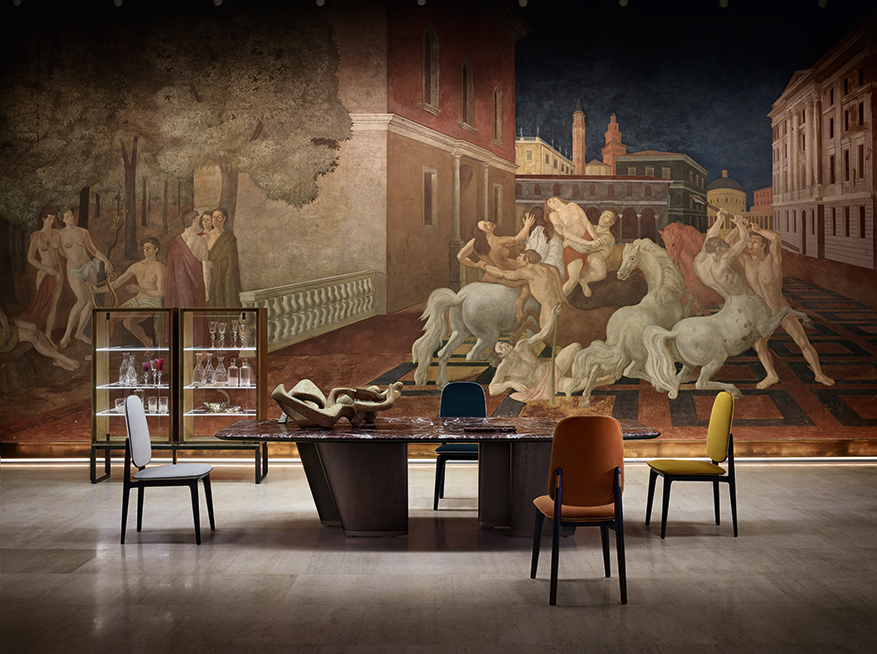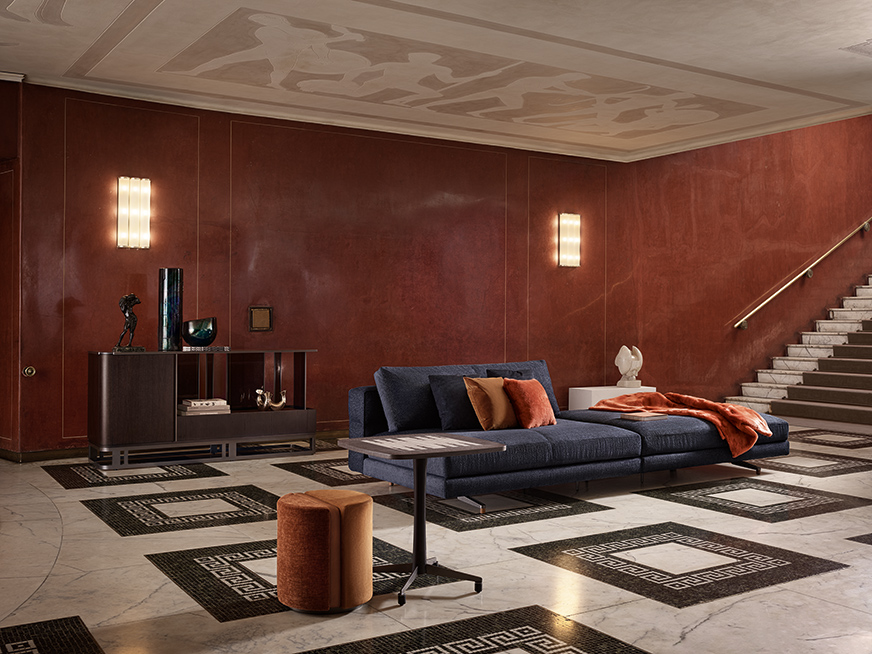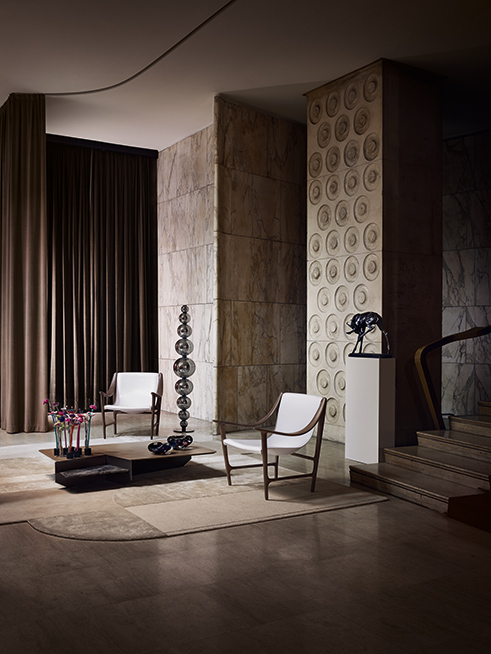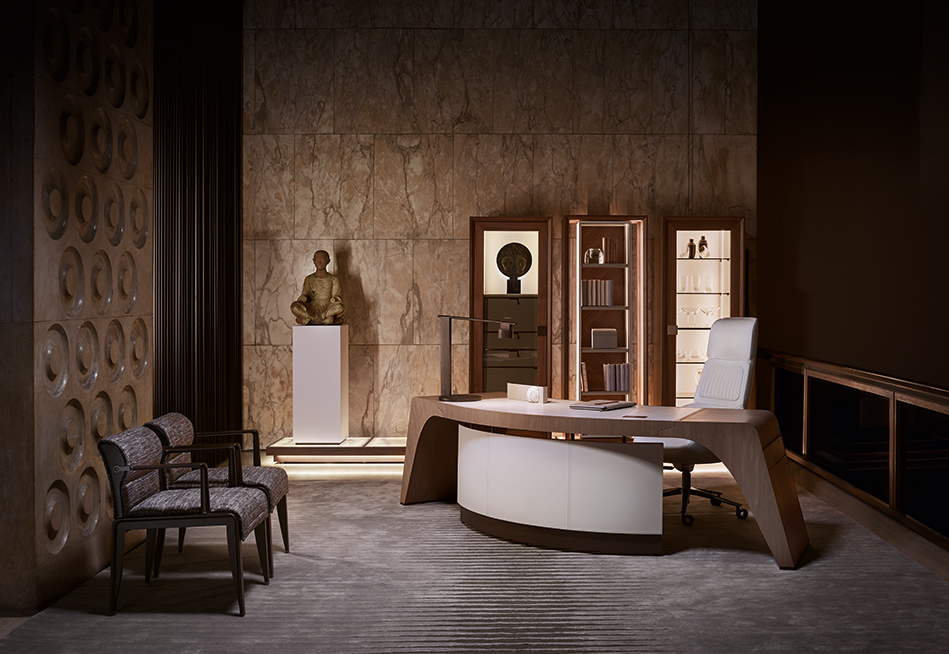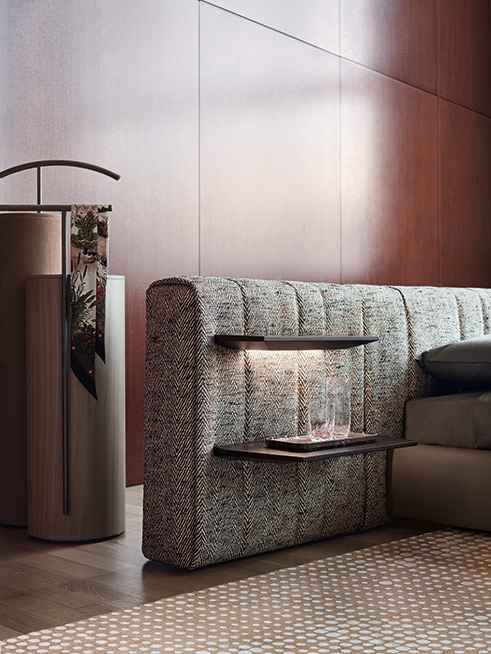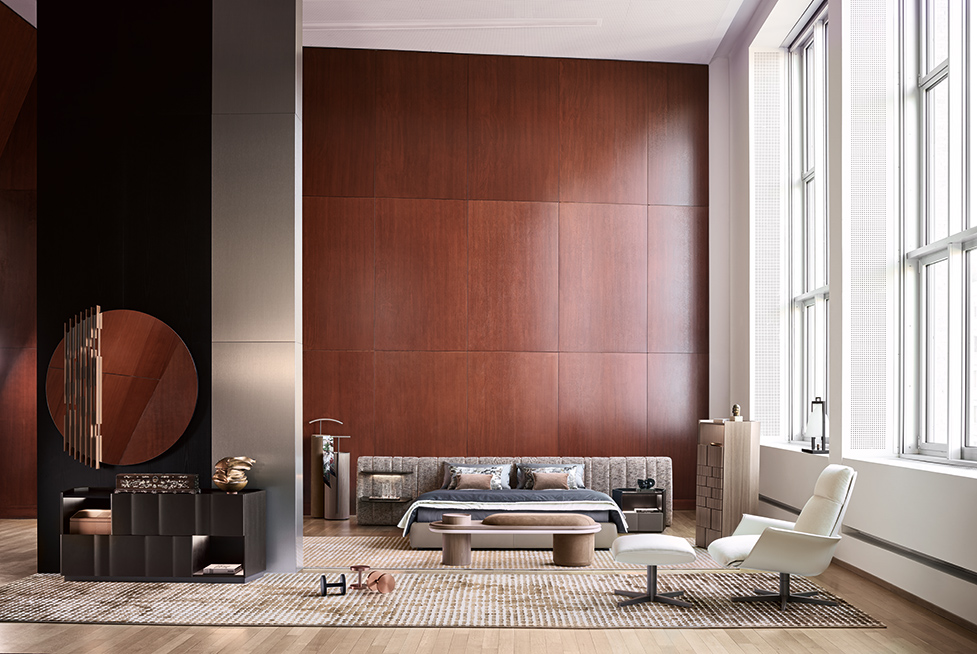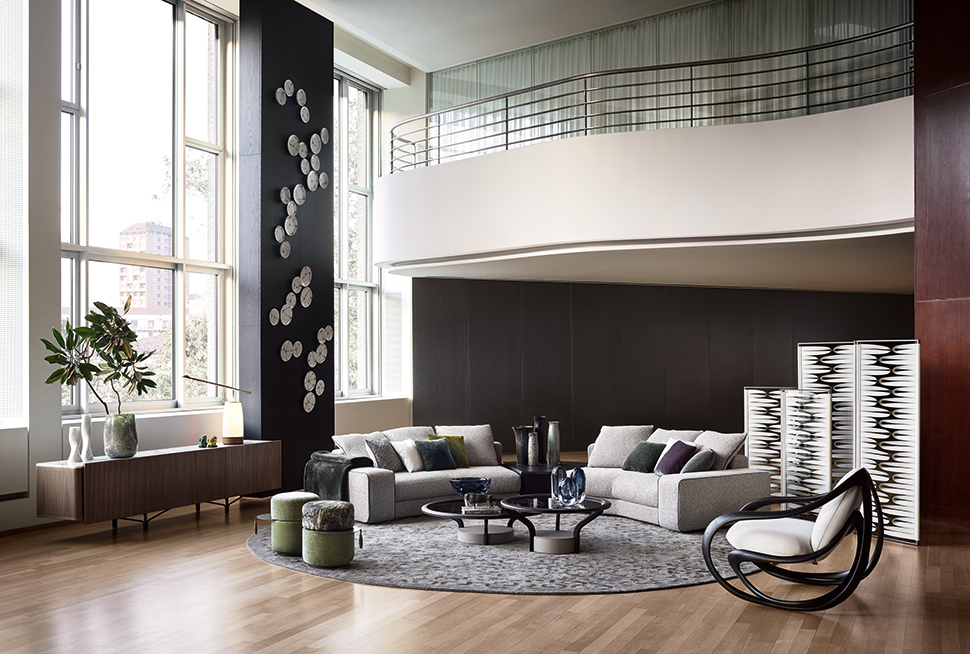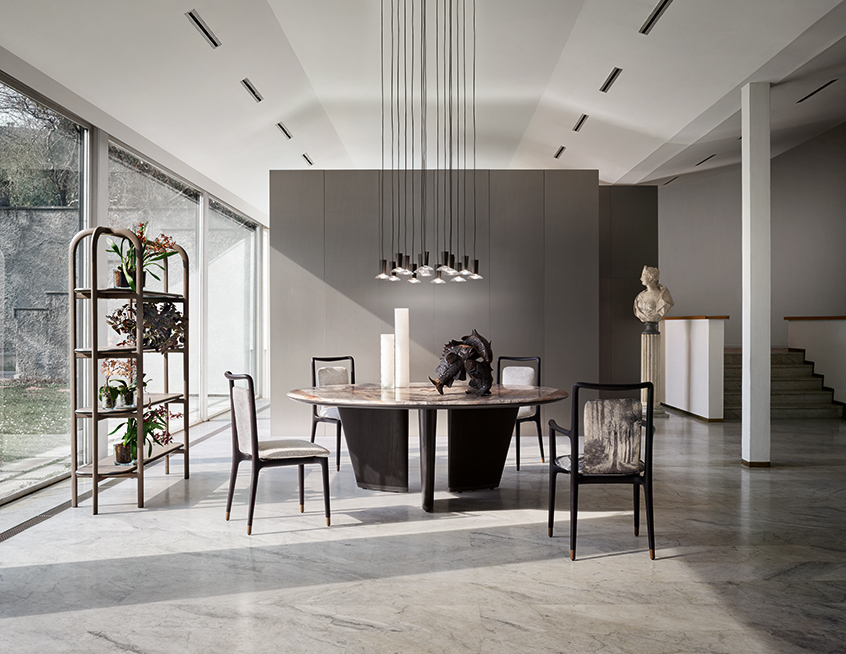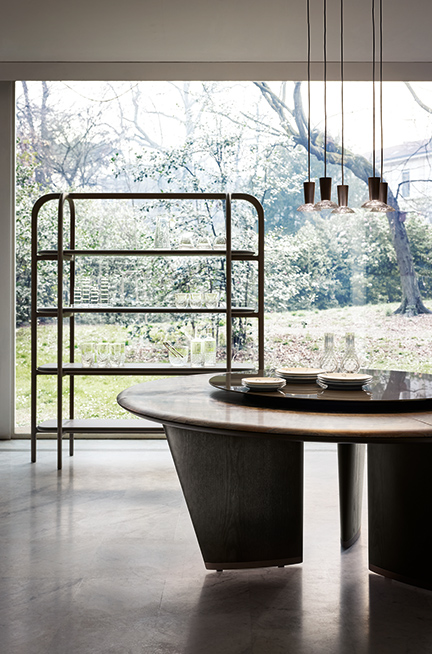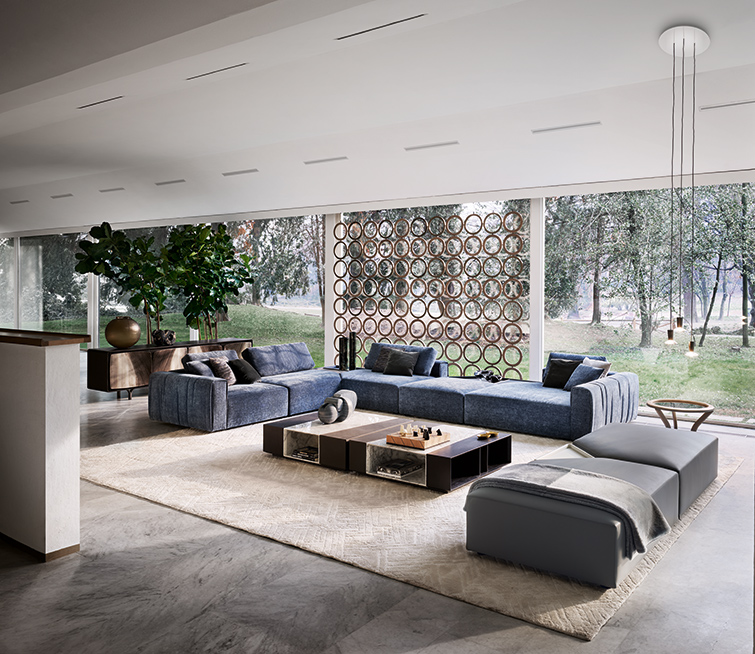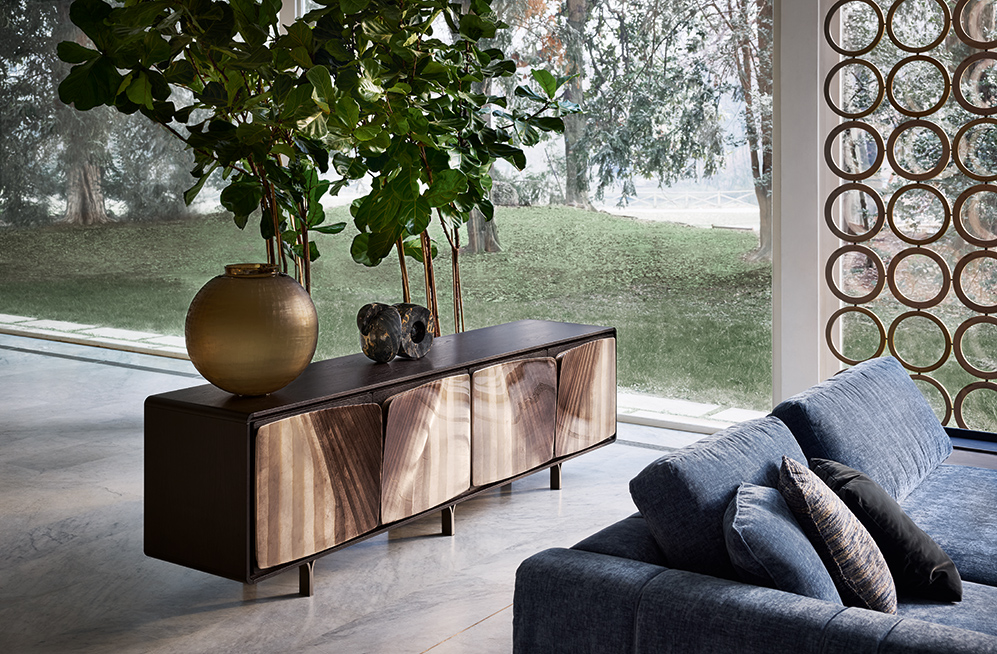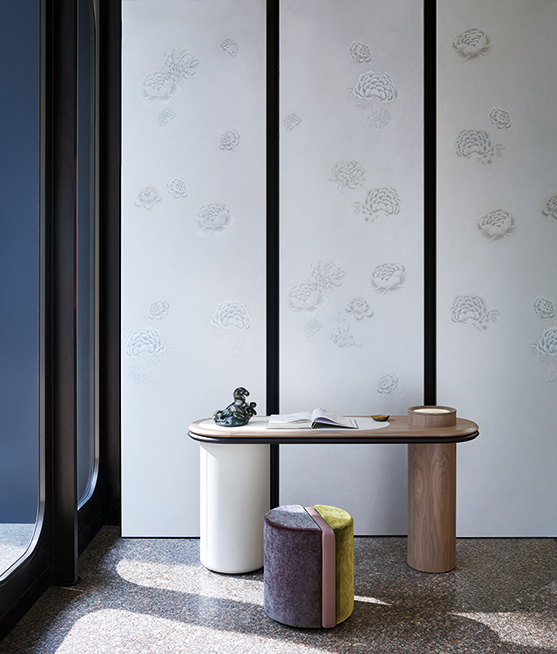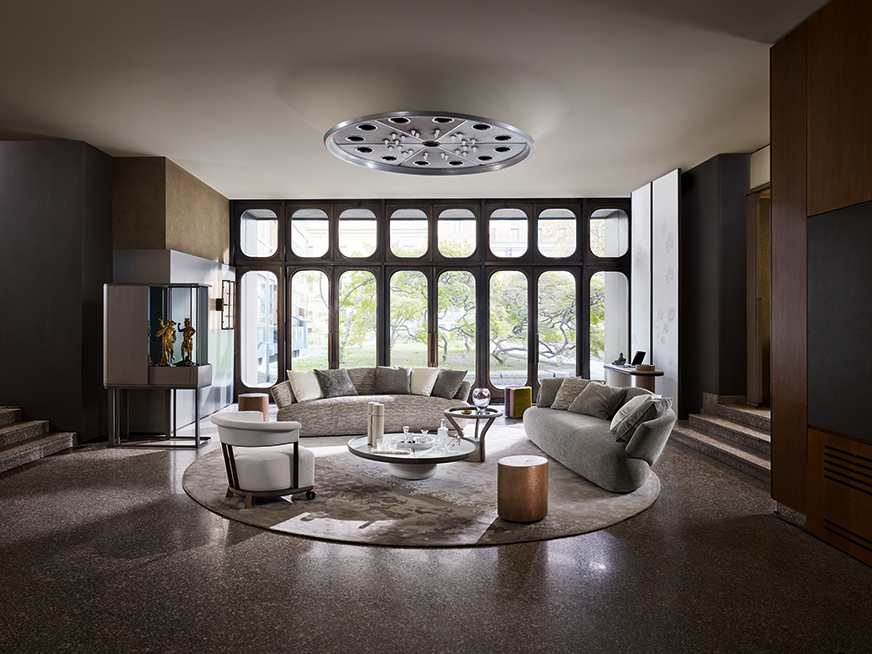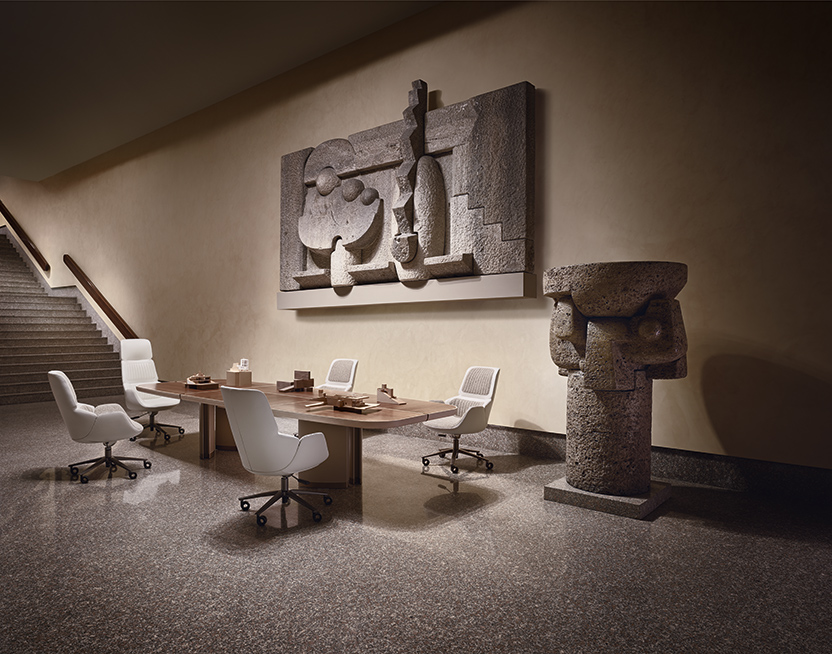PHOTO JOURNAL | Milan, Grand Tour
Milan, a Grand Tour
photographs by Federico Cedrone
words by Giancarlo Bosio
Milan is truly beautiful, my friend,
and believe me if I say
that sometimes it takes a lot of willpower
to resist its seductions and keep working.
—Giovanni Verga, from a letter to Luigi Capuana, 1873
The Manzoni Theatre designed by Alziro Bergonzo in 1950, the Swiss Institute by Armin Meili and Giovanni Romano (1952), the PAC | Pavilion of Contemporary Art by Ignazio Gardella (1954) and finally, the more recent Confcommercio offices designed by Eugenio Gerli in the late Sixties.
Once a year, GM’s Photo Journal shines the spotlight on unusual and intriguing details, idiosyncrasies and hallmarks of unique and unknown places and spaces. This issue takes our readers on a grand tour of Milan, with an extended visit to the Quadrilatero neighbourhood that has long been associated with fashion, but is now finding favour with the design sector, as testified by the fact that we have chosen Via della Spiga 31 as our new “home”, Giorgetti Spiga - The Place. However, there is more to the Quadrilatero than window shopping. It also features stunning architecture to delight the flâneurs who flock to the city from all over the world to saunter along the area’s streets. Here, fashion and design, tradition and innovation come together in an effortless dialogue against a backdrop of wonderful examples of Milanese nineteenth-century Modernist constructions whose essential lines and fine materials create a contemporary world that nevertheless retains the quality of a bygone age. Behind the architecture itself, however, are the stories of its origins and the visionaries who conceived and believed in these extraordinary buildings that were destined to house art, theatre or businesses or indeed, simply to incite wonder and appreciation.
Our tour begins at the Teatro Manzoni, to give this theatre its Italian name. The city’s pride and joy, its stage has been home to an illustrious cast of luminaries and divas, from Eleonora Duse and Sarah Bernhardt to Luigi Pirandello, Filippo Tommaso Marinetti, Vittorio Gassman, Giorgio Albertazzi, Eduardo De Filippo and many more. Perhaps Sabatino Lopez, author and critic of the 1920s, put it best when he wrote “Not too big, not too small, elegant, lively, refined… the Manzoni is quite possibly more Milanese than anything else in Milan.” When the theatre first opened its doors in Piazza San Fedele in 1872, it was known as the Teatro della Commedia, but following the death of renowned writer Alessandro Manzoni the following year, the name was changed. It has long represented a reference point in the cultural life not only of the Milanese, but of Italians in general and was the first theatre in Europe to install electric lighting, with records reporting that this took place as far back as 30 November 1883. Destroyed by Allied bombs in 1943, it was rebuilt by architect Alziro Bergonzo and inaugurated in 1950, at its official address of Number 42 Via Manzoni. The new theatre was part of a larger complex designed to also house a large theatre, a nightclub and a shopping centre.
After a leisurely 300-metre stroll, we find ourselves in front of the Swiss Institute, known locally as the Istituto Svizzero, on the corner of Via del Vecchio Politecnico and Via Palestro. Its story begins in 1913, when the “Society for the headquarters of the Schweizer Verein” was established with the mission of finding a “home” for Milan’s Swiss community. The building that was subsequently acquired in Via Disciplini in the Vetra area was completely destroyed during a particularly heavy air raid in 1943 and three years later, in the early days of peace time, Milan City Council gifted the Swiss Society a piece of land in Piazza Cavour. The design for what was considered a skyscraper at the time (it was the tallest building in Milan until 1954) was entrusted to architects Armin Meili and Giovanni Romani. Meili flew to New York where he found inspiration in the Lever House skyscraper and the futuristic United Nations building, which was then in the early stages of construction. Upon his return, he and Romano presented a design that fitted the Milanese context, a skyscraper that was in keeping with the high-rise condominiums found in the city, but three times taller. The choice of travertine, marble and granite was typically Italian, as were the arrangements of the windows, commercial spaces and top part of the skyscraper. The first stone was laid in November 1949 and the inauguration took place in 1952.
From here, it’s a hop, skip and a jump to the PAC | Pavilion of Contemporary Art at Number 14 of Via Palestro. This building’s story begins in 1947 when Milan City Council was looking for a new space to house the Municipal Collections of the 20th century and came across the former stables of Villa Reale, a royal residence that was destroyed by bombing in 1943. The villa had been the home of GAM, the Gallery of Modern Art, since 1921, but had become too small to accommodate more recent works and, ultimately, to become a contemporary art museum with potential for growth. In 1948, the design project was awarded to Ignazio Gardella and the pavilion opened in 1954, showcasing the 20th century collections. It wasn’t long, however, before it became clear that with the postwar interest in investing in art and culture, there were opportunities beyond Italy. Indeed, the PAC is among the very first examples in Italy of architecture designed to host contemporary art, in step with the European kunstahalle concept. Conceived as a versatile exhibition structure with fluid, wall-less spaces, which was considered highly innovative at the time, it also introduced other original features such as the continuity between the natural and the artificial, and between art and nature. This was achieved by installing large windows looking out onto the gardens of Villa Reale and was a nod to the legacy of the Modern Movement.
Our grand tour ends at Number 47 Corso Venezia, where we visit the Milan headquarters of Confcommercio, Italy’s largest business and trade association. Since 1967, the organisation has been based in Palazzo Castiglioni, a stunning example of Milanese Liberty architecture that was commissioned in the early twentieth century by businessman Ermenegildo Castiglioni and entrusted to Giuseppe Sommaruga, considered the most daring and in vogue architect and designer of the time. During my visit to the premises, I discovered a building built in the late Sixties, designed by architect Eugenio Gerli and engineer Giorgio Keffer, who were tasked with designing the reconstruction and renovation of the building, which was now destined to house the offices of a new owner, the Unione Commercianti di Milano [Milan Traders’ Association]. I was struck by the incredibly modern interiors and spaces that are closed to the public and even to Milan residents. Gerli, who was a student of Piero Portaluppi and Gio Ponti as well as a supporter of the Modern Movement espoused by Frank Lloyd Wright, Alvar Aalto and Charles Eames, boasted a vast and impressive CV, having designed villas, condominiums, office buildings, factories, banks and shops, as well as having renovated historical buildings. He embraced global design and combined pared-back, essential architectural lines with the visual arts, a tie with art that can be seen in his partnerships with the likes of Arnaldo Pomodoro, Lucio Fontana, Blasco Mentor, Pietro Cascella and Guido Somaré. Thinking about critic Marco Romanelli’s description of Eugenio Gerli as a ‘forgotten maestro’, I wanted to use our Photo Journal to tell a little of his story and share one of his hidden designs with GM readers.
Federico Cedrone was born into an artistic family in Salisbury, Rhodesia (now Harare, Zimbabwe). In 1970, during the revolution, he moved to Italy. In Rome, where he grew up, he discovered photography as a form of creative expression. Starting in 1989, he moved to various cities, from Florence to New York and Milan, where he began working with fashion publications, including Elle Décor as of 1996, a collaboration that led him to discover a world that was closer to his own way of being. Cedrone has collaborated with many Italian and international magazines, including Vogue, Elle, Grazia, D - la Repubblica delle donne, Io Donna, and Amica, and with many design companies, such as Knoll, B&B Italia, Arclinea, Rimadesio, Cassina, Poliform, Minotti, Bisazza, Rubelli, Desalto, Nemo, Boffi and De Padova, creating images for catalogues and advertising campaigns. He currently teaches at IUAV University of Venice and at H-Farm in Treviso.



